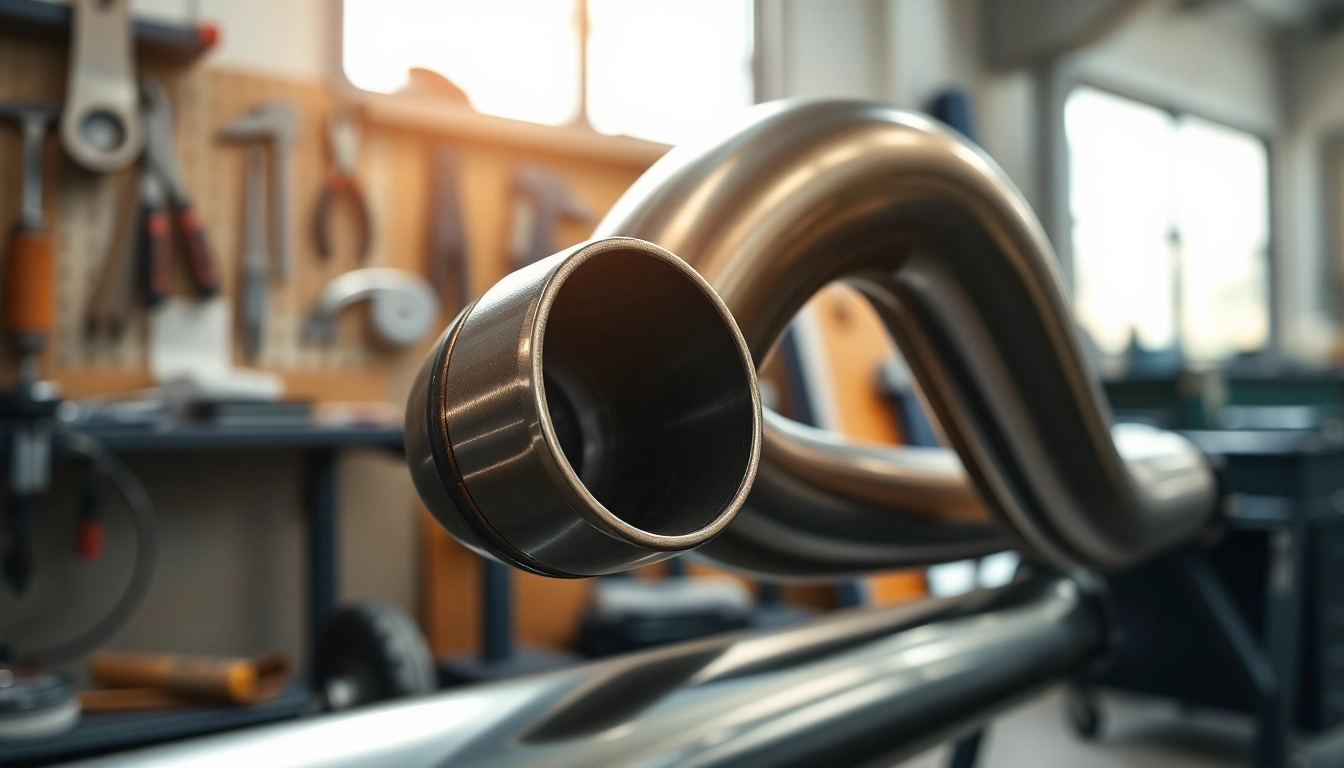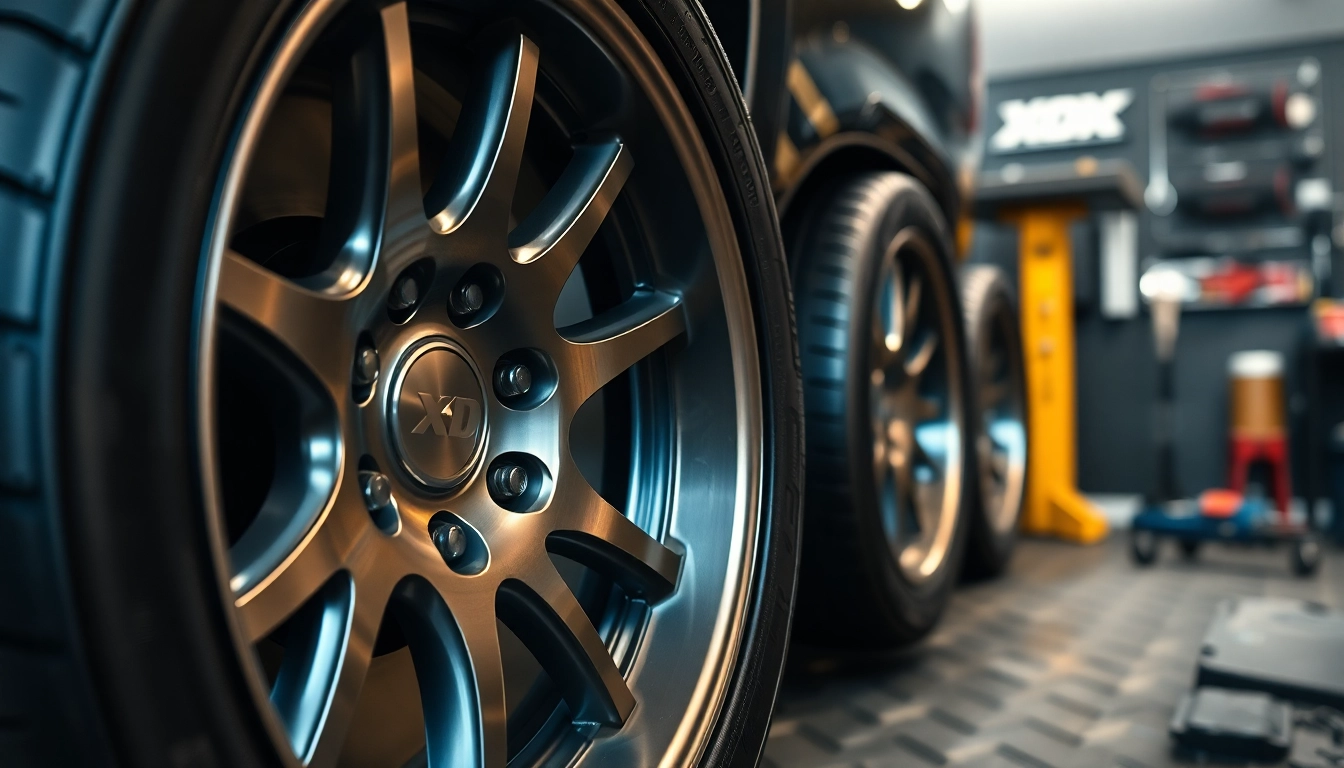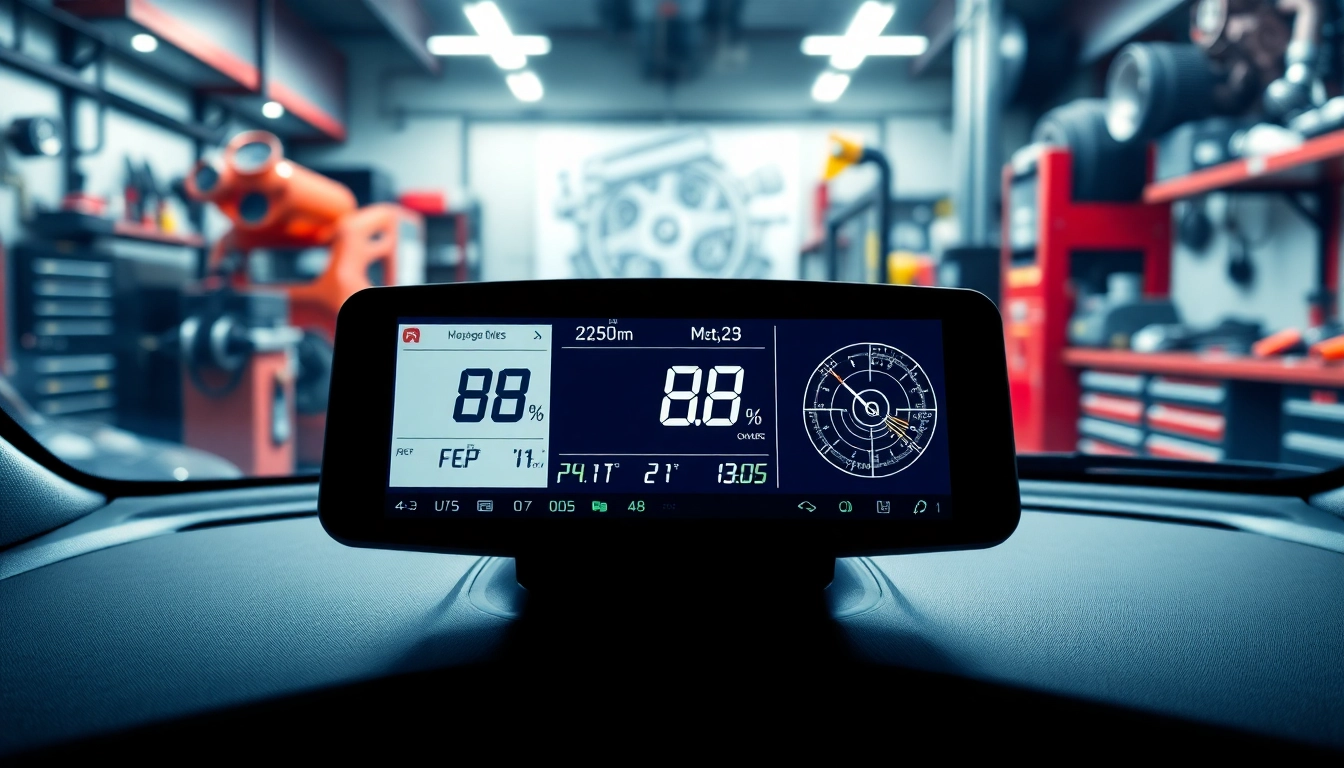What is a Midpipe?
Definition and Purpose
A midpipe is a crucial component of a vehicle’s exhaust system, located between the catalytic converters and the rear mufflers. It serves as the primary conduit for the exhaust gases produced by the engine, helping to channel these gases out of the vehicle efficiently. The design of the midpipe influences not only exhaust flow but also sound and overall vehicle performance, making it an essential element in both standard and high-performance exhaust systems.
Components and Structure
The structure of a midpipe typically includes several key components: the primary tube, flanges, and any additional features such as resonators or catalytic converters. The primary tube is generally made of stainless steel or aluminized steel, as these materials provide protection against high temperatures and corrosion. Flanges are used to secure the midpipe to other exhaust components firmly, ensuring a leak-free connection. Additionally, some midpipes may feature resonators, which help to alter the sound emitted from the exhaust system, enhancing the vehicle’s auditory presence without compromising performance.
Importance in Exhaust Systems
The midpipe plays a pivotal role in the efficiency of a vehicle’s exhaust system. It is designed to maintain optimal exhaust flow, reducing back pressure and allowing the engine to inhale more air, ultimately improving performance. When the midpipe is constructed with precise engineering, it maximizes the scavenging effect during engine cycles, which can lead to improved acceleration and horsepower gains. Furthermore, the choice of midpipe, whether stock or aftermarket, can significantly alter the sound profile of the vehicle, making it critical for both enthusiasts and casual drivers alike.
Benefits of Upgrading to a High-Performance Midpipe
Improved Exhaust Flow
One of the primary benefits of upgrading to a high-performance midpipe is the significant enhancement in exhaust flow. High-performance midpipes are often designed with larger diameters and less restrictive bends compared to factory versions, allowing for a smoother and more direct path for exhaust gases. This improved flow not only helps reduce back pressure but also aids in the engine’s ability to expel exhaust gases quickly, which is essential for high-revving engines. Enhanced exhaust flow can lead to noticeable increases in throttle response and overall engine efficiency.
Sound Enhancement
The sound that emanates from a vehicle’s exhaust system is a critical aspect for many car enthusiasts. Installing a high-performance midpipe often results in a more aggressive and deeper exhaust note, transforming the auditory experience while driving. Depending on the design and whether a resonator is included, the sound can range from a subtle growl to an exhilarating roar. This enhancement is typically favored by those looking to personalize their vehicle’s character and create a more engaging driving atmosphere.
Potential Gains in Horsepower
Upgrading to a high-performance midpipe can lead to substantial horsepower gains. By optimizing exhaust flow and reducing restrictions, the engine can breathe more efficiently. Many drivers report increases in horsepower ranging from a few extra units to significant boosts, depending on the vehicle and corresponding modifications. In the context of performance tuning, a well-matched midpipe works synergistically with other components such as downpipes and catback exhaust systems to maximize the overall performance output of the engine.
Midpipe Installation: A Step-by-Step Guide
Tools and Materials Needed
Before embarking on the installation of a new midpipe, it is essential to gather the necessary tools and materials. Commonly required tools include:
- Socket set (metric and standard)
- Ratchet and extensions
- Torque wrench
- Pipe cutter or hacksaw (if modifications are needed)
- Safety goggles and gloves
- High-temperature exhaust sealant
Materials may include the new midpipe itself, any required gaskets, and replacement flanges if the stock ones are damaged.
Installation Process Overview
The installation of a midpipe generally involves the following steps:
- Ensure the vehicle is parked on a flat surface and secure it with wheel chocks.
- Raise the vehicle using hydraulic jacks and place it on jack stands.
- Locate the existing midpipe and remove any clamps or bolts securing it in place, using penetrating oil if necessary to loosen rusted parts.
- Carefully detach the midpipe from the catalytic converters and the rear exhaust system.
- Prepare the new midpipe, ensuring all necessary gaskets are in place.
- Align and install the new midpipe, securing it to the catalytic converters and the rear mufflers.
- Reconnect any sensors or brackets that were attached to the previous midpipe.
- Check for proper fitment and tighten all bolts to the manufacturer’s recommended torque specifications.
- Start the vehicle and check for leaks around the joints.
- Lower the vehicle and do a final inspection of the installation.
Common Mistakes to Avoid
While installing a midpipe can be straightforward, there are several common mistakes to avoid:
- Forgetting to Use New Gaskets: Old gaskets can lead to exhaust leaks. Always use new gaskets to ensure a proper seal.
- Over-tightening Bolts: Applying too much torque can damage threads or crush gaskets. Follow recommended specifications.
- Neglecting Exhaust Hangars: Ensure that all hangars are properly installed to prevent any rattling noises.
- Skipping the Leak Test: Not checking for leaks after installation can lead to performance issues or unpleasant exhaust noises.
Midpipe Maintenance Tips
Regular Inspection Practices
Regularly inspecting the midpipe is essential to ensure its longevity and performance. It is advisable to visually check the midpipe for signs of damage, rust, or corrosion at least once every oil change. Pay close attention to the connections at the flanges and any areas where the pipe bends or joins with other exhaust components. If any cracks or leaks are detected, it is wise to address these issues immediately to prevent further engine performance problems.
Cleansing and Care Techniques
Maintaining a clean midpipe can help extend its lifespan. Use a non-abrasive cleanser to remove any built-up dirt or debris on the exterior. Additionally, inspecting and wiping away any residue from the exhaust can prevent build-up and potential blockages. If the vehicle is frequently driven in harsh conditions, consider applying a high-temperature exhaust coating to protect the surface from rust and corrosion.
Signs of Wear and Tear
Awareness of the signs of wear and tear on a midpipe is critical for optimal vehicle performance. Common indicators include:
- Unusual Noises: Any rattling or hissing sounds can imply a loose connection or a leak.
- Decrease in Performance: If there are noticeable drops in acceleration or power, the midpipe may be obstructed.
- Check Engine Light: A persistent check engine light may indicate exhaust issues related to the midpipe’s performance.
Comparing Midpipe with Other Exhaust Components
Midpipe vs. Downpipe
When comparing midpipe to downpipe, it is important to understand their distinct functions within the exhaust system. While a midpipe connects the catalytic converter to the rear muffler, the downpipe carries exhaust gases from the turbocharger or manifold to the catalytic converter. Upgrading the downpipe typically has a more substantial impact on turbocharged vehicles, as it allows for quicker spool times and enhanced turbo efficiency. However, a well-designed midpipe is equally crucial for promoting effective exhaust flow downstream from the catalytic converter.
Midpipe vs. Cat Back Exhaust
The cat-back exhaust system comprises all components from the catalytic converter to the rear end of the vehicle. Understanding the differences between midpipe and cat-back components is essential for identifying specific upgrade needs. The midpipe is integral to the entire exhaust system but does not include mufflers or tailpipes that are critical components of a cat-back system. An upgrade to the cat-back exhaust can yield the most significant changes in sound and performance while still benefiting from a high-performance midpipe upgrade.
Integration with Performance Tuning
When considering performance tuning, the midpipe plays a vital role in the overall enhancement strategy. Properly matching the midpipe with other aftermarket components, such as high-flow air intakes, ECU remaps, and tuned exhausts, can lead to more significant performance improvements. The synergistic effect of a comprehensive upgrade enables enthusiasts to extract maximum power and efficiency from their engines. Therefore, understanding where the midpipe fits within the broader scope of performance tuning is essential for optimizing both sound and speed.



